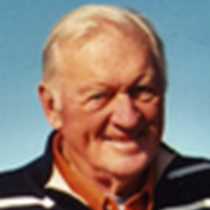LeConte Bay and Petersburg, Alaska
“Let us journey to a lonely land I know.
There’s a whisper on the night-wind,
There’s a star agleam to guide us,
And the Wild is calling, calling . . . let us go.”
-Robert Service, 1907
After breakfast, the Sea Lion cruised through LeConte Bay – once called “Hulti” by resident Tlingit natives for the mythical thunderbird. Guests boarded Zodiacs at this point for rides among sculptured icebergs floating south from the face of LeConte glacier. Harbor seals and sea birds watched this curious flotilla, while naturalists quietly narrated the adventure. Later, guests were taken to several locations near Petersburg (above photo) for hikes, including an extraordinary meander through an Alaskan bog on Kupreanof Island. When all hands were aboard, the historian gave a talk on the history of Petersburg and an overview of gold strikes that placed Alaska firmly in commercial, mythical, and literary stardom from approximately the 1880s until the early 1900s.
Local human history dates back 2000 years to the placement of stakes for Native fishtraps at Sandy Beach, about three miles north of Petersburg. When Peter Thams Buschmann moved to the state of Washington from Aure, Norway (1891) he was forty-one years old and the father of eight children. After fishing, salting and smoking fish in Puget Sound, he investigated opportunities in Alaska, staking a site on the north end of Mitkof Island – today’s Petersburg. Life was hard, but with the help of his family, friends, and Native and Chinese workers he built a wharf, saltery and sawmill in 1899. Business reverses caused him to take his life a few years later but his sons stayed in Petersburg and saw the town grow and prosper. In the 1920s, Petersburg packed and sold more halibut than any fishing center in the world.
“Let us journey to a lonely land I know.
There’s a whisper on the night-wind,
There’s a star agleam to guide us,
And the Wild is calling, calling . . . let us go.”
-Robert Service, 1907
After breakfast, the Sea Lion cruised through LeConte Bay – once called “Hulti” by resident Tlingit natives for the mythical thunderbird. Guests boarded Zodiacs at this point for rides among sculptured icebergs floating south from the face of LeConte glacier. Harbor seals and sea birds watched this curious flotilla, while naturalists quietly narrated the adventure. Later, guests were taken to several locations near Petersburg (above photo) for hikes, including an extraordinary meander through an Alaskan bog on Kupreanof Island. When all hands were aboard, the historian gave a talk on the history of Petersburg and an overview of gold strikes that placed Alaska firmly in commercial, mythical, and literary stardom from approximately the 1880s until the early 1900s.
Local human history dates back 2000 years to the placement of stakes for Native fishtraps at Sandy Beach, about three miles north of Petersburg. When Peter Thams Buschmann moved to the state of Washington from Aure, Norway (1891) he was forty-one years old and the father of eight children. After fishing, salting and smoking fish in Puget Sound, he investigated opportunities in Alaska, staking a site on the north end of Mitkof Island – today’s Petersburg. Life was hard, but with the help of his family, friends, and Native and Chinese workers he built a wharf, saltery and sawmill in 1899. Business reverses caused him to take his life a few years later but his sons stayed in Petersburg and saw the town grow and prosper. In the 1920s, Petersburg packed and sold more halibut than any fishing center in the world.




